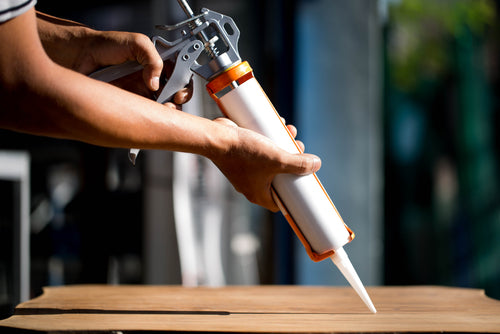If you have ever worked in an industrial setting, you have probably come across silicone adhesives and sealants. These diverse products come with a variety of properties to meet different application needs.
Silicone adhesives and sealants are made from silica, the sand found in quartz. Silicone adhesives are used to bond two substrates together while silicone sealants are used for gap or joint filling.
Unlike some other types of adhesives, silicone adhesives need to cure or fully dry. This process can make working with these products a bit more challenging and time-consuming.
How Long Does Silicone Take to Dry?
How long silicone takes to cure and dry will depend on a couple of different factors. The initial silicone dry time may only be 30 minutes to an hour, but at this point, the silicone is only dry to the touch. The full cure time for silicone is usually around 24 hours but could also take several days.
When working with these products, it is important to take the silicone cure time into account to ensure you get a full cure.

Do's of Using Silicone Adhesives and Sealants
When it comes to working with silicone adhesives and sealants, there are a few things you should note. Especially since you need to be mindful of the silicone curing process, these tips can help you make full use of silicone adhesives and sealants.
Do Use a Primer
Bonding primers are valuable because they help sealants adhere to your chosen surface and reach their optimum bond strength. Primers may be applied by brush, cloth, or spray gun. Always read the product's instructions for preparation and application for best results.
Do Consider the Shelf Life
The shelf life of silicone can be especially short in hot and humid conditions. Storage in cooler and drier environments may help extend the shelf life of silicone adhesives, but they will not last forever. Do not open the packages before you are ready to use them. Always check the product's shelf life before ordering to avoid wasted product.

Do Prep Your Substrates
For best results, you will want to prep your substrates according to the manufacturer's recommendations. This process may involve cleaning the substrates and wiping them down with isopropanol. Always make sure the substrates are fully drying before applying the adhesive.
Do Use Pressure
In some cases, like bonding metal, pressure must be applied to ensure the bond formed is as strong as possible. A vise or clamp can hold the pieces together with firm pressure so that the adhesive can properly bond. Wait the recommended amount of time before removing the clamp and allow the adhesive ample time to dry. Do not hasten the process, otherwise, you will have problems.
Do Apply Carefully
Removing silicone sealant is no easy task. The only way you will be able to remove silicone sealant is through mechanical methods like with a cheese wire, sharp knife, or sander, so always be mindful you are applying it in the right spot before dispensing the product.
Don'ts of Using Silicone Adhesives and Sealants
While there is a lot you should do when working with silicone sealants and adhesives, there is also a lot you shouldn't do.
Don't Choose a Product Without Research
Before you use a silicone adhesive or sealant for your project, you should check the materials you are working with. There are adhesives made especially for certain materials. Make sure you choose the right silicone for your project.
The ASI 335 neutral cure silicone, for instance, is great for industrial applications involving engines, oil pans, or transmission. For gluing steel, aluminum, brass, mortar, granite, marble, wood, and many plastics, the ASI 57 modified polyurethane sealant is a great option.
Don't Ignore the Expiration Date
Make sure the silicone adhesive or sealant you are using is not past its expiration date. This is a little detail that is easily overlooked. These products undergo small changes once they are past their expiration date that can not only make them harder to work with but also hurt the quality of the final product.
Don't Neglect Surface Prep
If there is any grime, oil, grease, or other residues on the surfaces you are working with, you will have a difficult time forming a solid and good bond. Make sure you clean surfaces thoroughly according to the manufacturer's recommendations and let them dry before proceeding with your work.
Don't Forget to Read the Instructions
There are various types of silicone sealants and adhesives, and they come with slightly different instructions. There are different cure times, surface preparation requirements, and recommendations for substrates. Some might also need to be mixed with other substances before use. Always read the instructions and follow them exactly or else issues could arise.
Get Started
Need help selecting the right silicone adhesive or have more questions? Get a free expert recommendation based on your materials and use case.


